Blog
The AlunAlun Dance Circle at the 60th Anniversary of Indonesia-Philippine Bilateral Relations
The best way to celebrate friendly relations with a Southeast Asian country is through dance and music. On 24 November 2009, the AlunAlun Dance Circle performed with the Sanggar Budaya Tari at the Heritage Hotel, Manila to commemorate the 60th anniversary of good relations between Indonesia and the Philippines. With less than three weeks of preparation, members of the ADC (Nannette Matilac, Rose Ann Jasareno and Temay Padero) learned a Balinese dance and a Minangkabau martial dance from the members of the Sanggar Budaya Tari. Meanwhile, the Indonesian dancers also learned pangalay and bula-bula (dancing with bamboo clappers), which they performed with relative ease. Owing to the affinity of pangalay dance tradition with Indonesian dances, both Filipino and Indonesian dancers were able to learn the new choreographies within several sessions of dance instruction.
Other members of the AlunAlun Dance Circle who performed during the historic occasion were ADC artistic director Ligaya Amilbangsa, Punch Gavino, Gimo Angeles and Raymund Marcaida. Raymund, who studied Balinese dances in Indonesia, also performed a solo Balinese dance number. Joy Ricote acted as stage manager.
Check out the photos by Jun Malillin through the link below.
http://www.facebook.com/album.php?aid=137356&id=512617406&l=6ceb5bb0a8
Cultural Mission in Hanoi
By Raymund Marcaida
AlunAlun Dance Circle (ADC) arrived in Hanoi, Vietnam last May 28, 2009 with a two-fold mission: first, to present the Pangalay dance form to the Filipino Community based in Hanoi; second, to perform for the reception for the diploatic corps hosted by Philippine Ambassador to Vietnam Laura Quiambao Del Rosario. Both events were part of the celebration of the 111th Anniversary of the Declaration of Philippine Independence and the Philippine Heritage Month.
ADC had been fortunate to have been invited by Amb. Del Rosario as a result of an encounter with the ambassador and ADC’s Managing Director Ms. Nannette Matilac during an EU and Asia Europe Meeting conference in Hanoi last Dec 2008. Ms. Matilac mentioned about ADC’s advocacy, the promotion and preservation of Pangalay, an ancient but little-known Philippine dance style. Soon, the formal invitation from the ambassador came, along with the support from the National Commission on Culture and the Arts (NCCA). Ms. Ligaya Fernando Amilbangsa, co-founder and artisitc director of ADC, headed the eight-person delegation. The other members of the team were: CB Garrucho, Mariel Francisco, Punch Gavino, Rose Ann Jasareno, Nannette Matilac, Nini Matilac and this writer.
Hanoi is a very charming place, exuding with old world charm, teeming with colorful quaint shops, swarming with thousands of motorcycles. At the center of the city is the legendary Hoan Kiem Lake with its revered resident, the mythical turtle, that gave a magic sword to a brave leader who defeated the invaders .
ADC had two days to rehearse and to block the dances at the two venues: the Hanoi Press Club located behind the Metropole, the city’s most historical and luxurious hotel; and the Hanoi Sofitel, where the diplomatic event would be held.
Intuitively, Amb. Del Rosario suggested a rearrangement of the repertoire which turned out to be appropriate. Upon the ambassador’s suggestion, a new dance was added to showcase Pangalay’s versatility in adapting to Western classical music. The new dance was choreographed by Ms. Fernando to the music of Bach’s Air on G-String, right in the middle of the living room of the ambassador’s residence at the Sedona Suites facing the West Lake. (ADC delegation was billeted at the ambassador’s residence.) The newly choreographed dance was finished just before midnight, with the ambassador suggesting a thing or two on the choreography. Everyone was smiling and contented on the resulting piece of work. Thus, a new choreography was created. Its world premiere was on 1 June 2009 at Hanoi Sofitel Plaza.
The “Pista sa Hanoi” affair at the Hanoi Press Club was a typical Pinoy fiesta held indoor. Preparation was a labor of love by members of the Filipino Community who dressed up the hall with banderitas and native pahiyas arkos, complete with handmade flowers, fresh fruits and native handicrafts. For the first time, a Santacruzan was held around the block, with children and young adults parading in elegant gowns and tiaraed heads, holding symbolical objects from the bible.
Pista sa Hanoi was graced by the presence of artist Joey Ayala who performed with the passion of a poet, a nationalist and an environmentalist. In the spirit of creative collaboration, ADC danced to four of Ayala’s songs: “Magkabilaan”, “Walang Hanggang Paalam”, “Basta May Saging, Labing” and “Pasasalamat”. The ADC performance consisted of Pangalay being used in various musical forms, from a Lucio San Pedro lullaby classic “Sa Ugoy ng Duyan”, to traditional folk songs like “Sa Kabukiran” and “Paru-parong Bukid,” as interpreted by violinist Gilopez Kabayao; from novelty songs of Yoyoy Villame’s “Tsimis” and Ernani Cuenco’s “Kalesa, to Sampaguita’s rock classic, “Bonggahan.”
It is always a joy to perform for fellow Filipinos in a foreign land. Filipinos are always appreciative of anything that comes from the motherland, especially because they miss home. The ambassador herself, upon seeing Pangalay for the first time during the rehearsal, was teary-eyed and got homesick for the Philippines. Instantly, she knew that bringing Pangalay and ADC to perform in Hanoi was a right decision, the best!
Meanwhile, a lot of Filipinos were surprised upon learning that the dance is one of the indigenous dances of the Philippines. Positive comments from the audience, both from Filipinos and foreigners alike, affirmed what the Philippine ambassador felt for Pangalay. Ambassador Del Rosario was elated to learn of the favorable reviews from the international community.
The AlunAlun Dance Circle takes pride in promoting Philippine culture within the country and abroad. The ADC Cultural Mission to Hanoi will alway bring back fond memories of the warm hospitality of Ambassador Laura Q. Del Rosario and the Filipino Community, the warm reception of the diplomatic corps, Ha Long Bay cruise and shopping at Hang Gai and To Tich streets of the Old Quarter.
PANGALAY AND COMMUNITY THEATER IN BOHOL
PANGALAY CHOREOGRAPHY IN “TAWAG SA BANTAYAN”
by N. Matilac
Lutgardo (Gardy) Labad was the director of a community theater production in Maribojoc, Bohol performed against the backdrop of the historic Punta Cruz watchtower. The production, “Tawag sa Bantayan,” with gala night on 18 December 2008 was a success. The performance was the soft launch of a community-based theater as part of sustainable tourism program. It was the fulfillment of a dream for Gardy, Ligaya and Nannette to create dance theater utilizing pangalay. The dream could not have been possible without the convergence of efforts and intentions: a supportive mayor in the person of Mayor Jun Evasco, 20 hard-working grassroots theater artists, the NCCA, the AlunAlun Dance Circle and the civil society in Bohol. The pictures at our photo gallery attest to the powerful fusion of theater and pangalay. (Please read related story below.)
Photos courtesy of Gardy Labad
Pangalay dance workshop for the Punta Cruz Cultural Collective
Workshop site: Maribojoc municipality, Bohol Province
Schedule: October 10-20, 2008
Performance / showcase: October 21, 2008
Dance teachers: Ligaya Fernando-Amilbangsa and Nannette Matilac
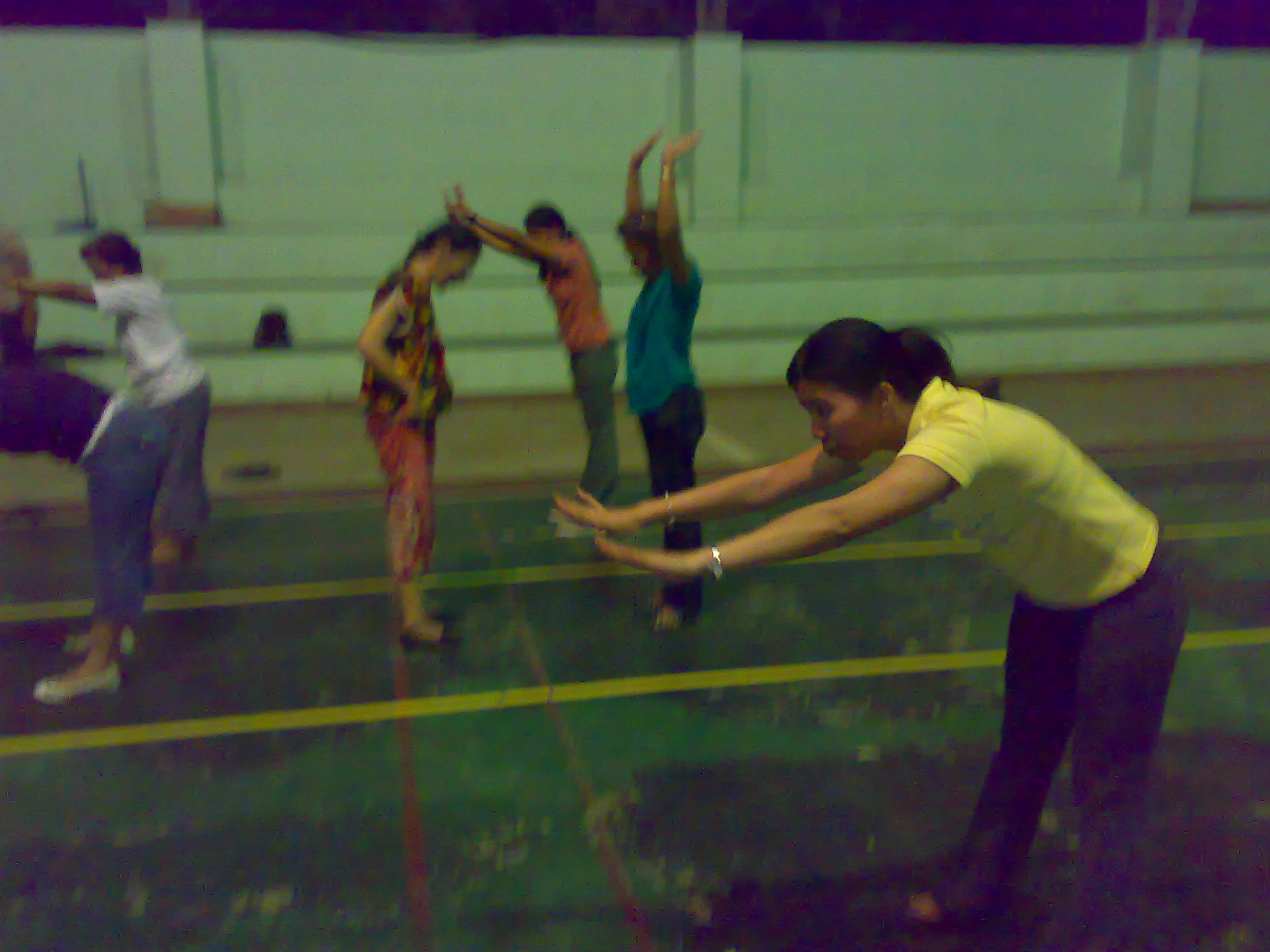

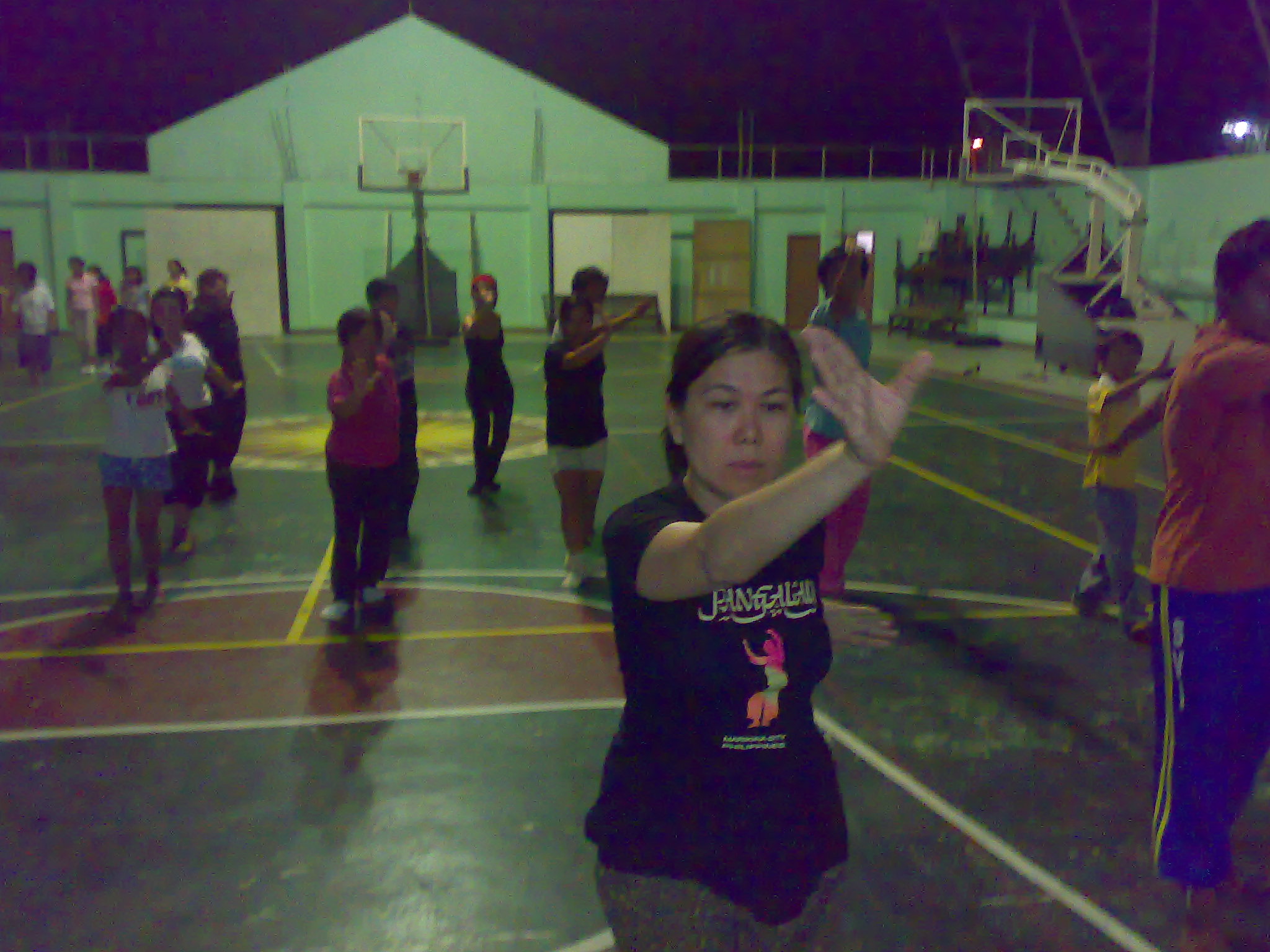
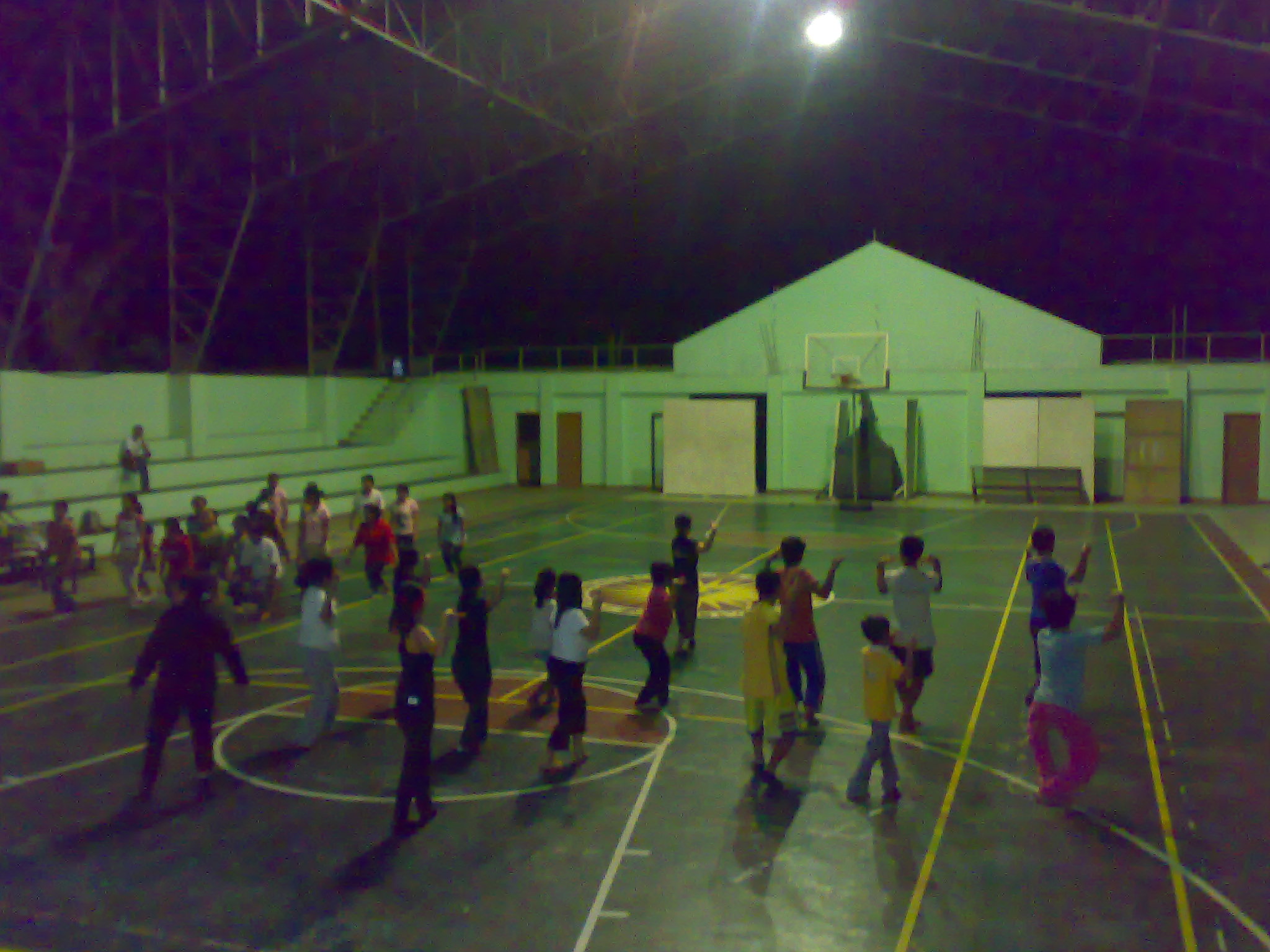
The most challenging phase of conservation is in introducing a vanishing dance tradition anywhere in the Philippines and, typically, in a place like Bohol.
There were 20 participants, majority of them young people, in the pangalay workshop held at the gym of Maribojoc municipality, Bohol. Dance teachers Ligaya Fernando-Amilbangsa and Nannette Matilac used the Amilbangsa Instruction Method (AIM) in teaching the pangalay dance style of the Sulu Archipelago. Pangalay may look easy but the dancer must have strong technique and good physical preparation to be able to dance it beautifully, just like dance styles of Asia (Khmer, Thai, Balinese and Indian traditional/classical dances) and the West (jazz, ballet, contemporary dance).
The participants had undergone many hours of dance lessons in the past month before the pangalay dance workshop, specifically contemporary dance. Thus, their bodies were somehow prepared for the physical regimen of pangalay. However, they still encountered much difficulty in coordinating the hand and arm movements, the Asian dance posture, the bent and springing motion of the knees into slow, seamless and flowing movements.
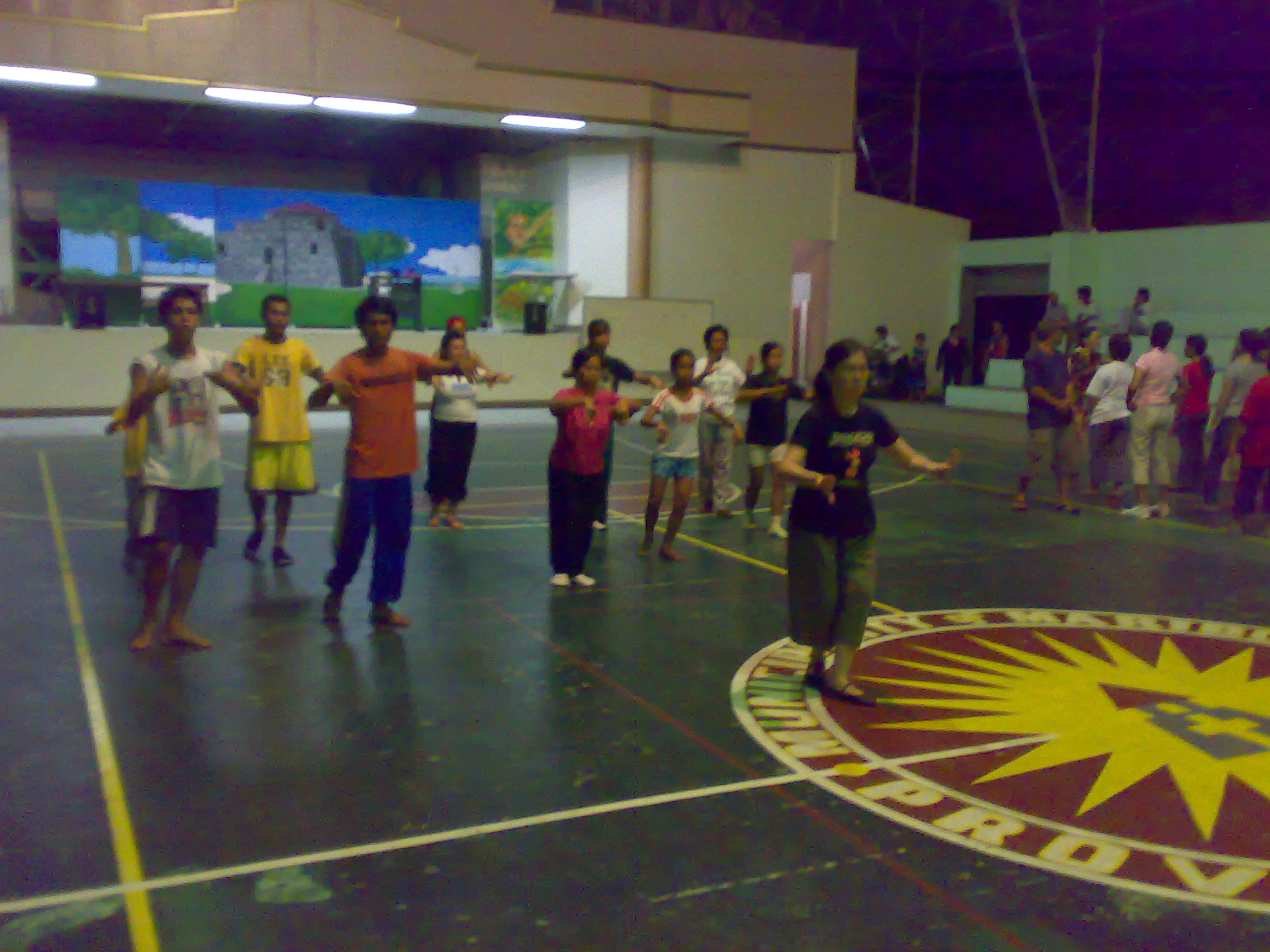
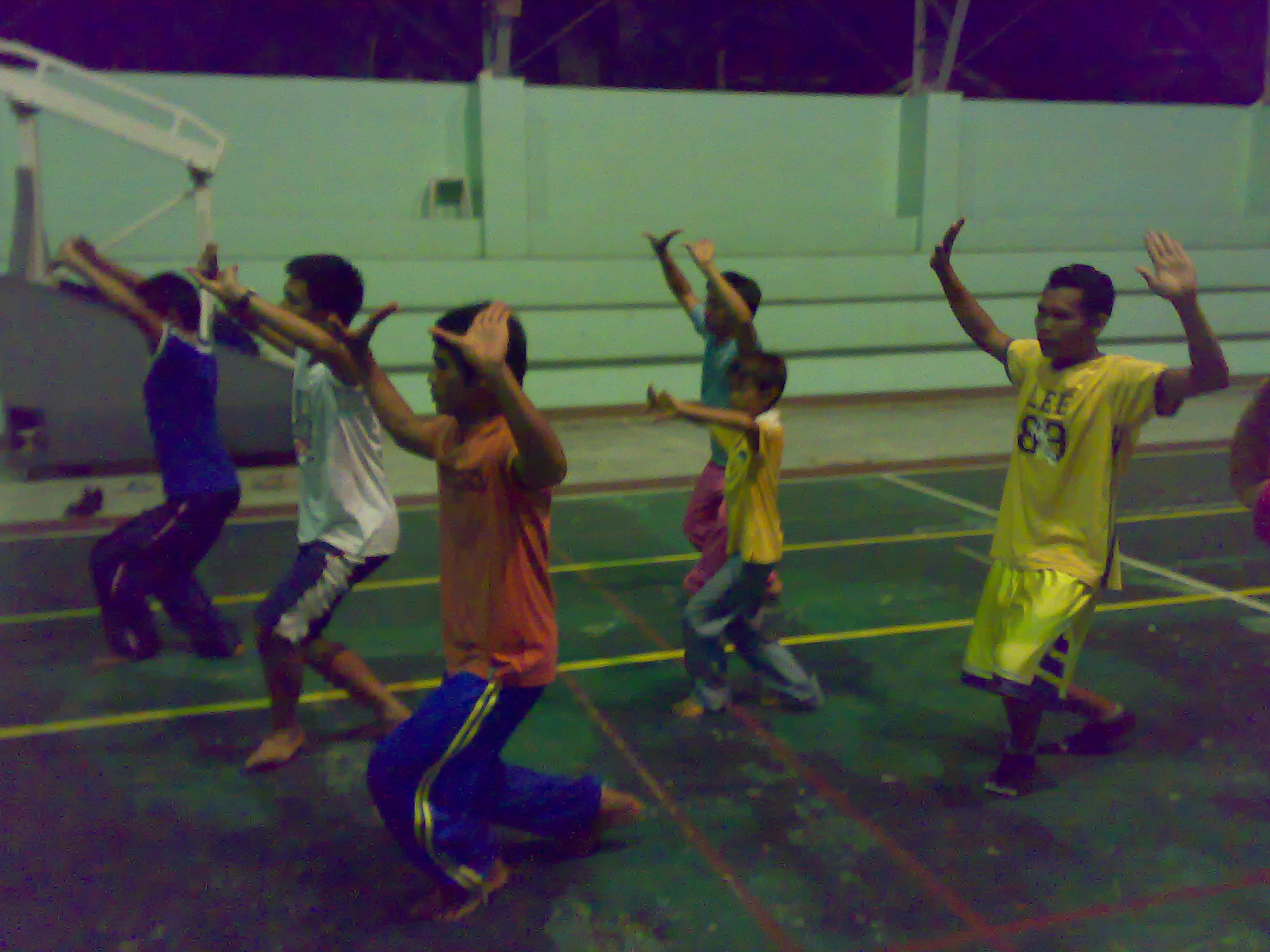
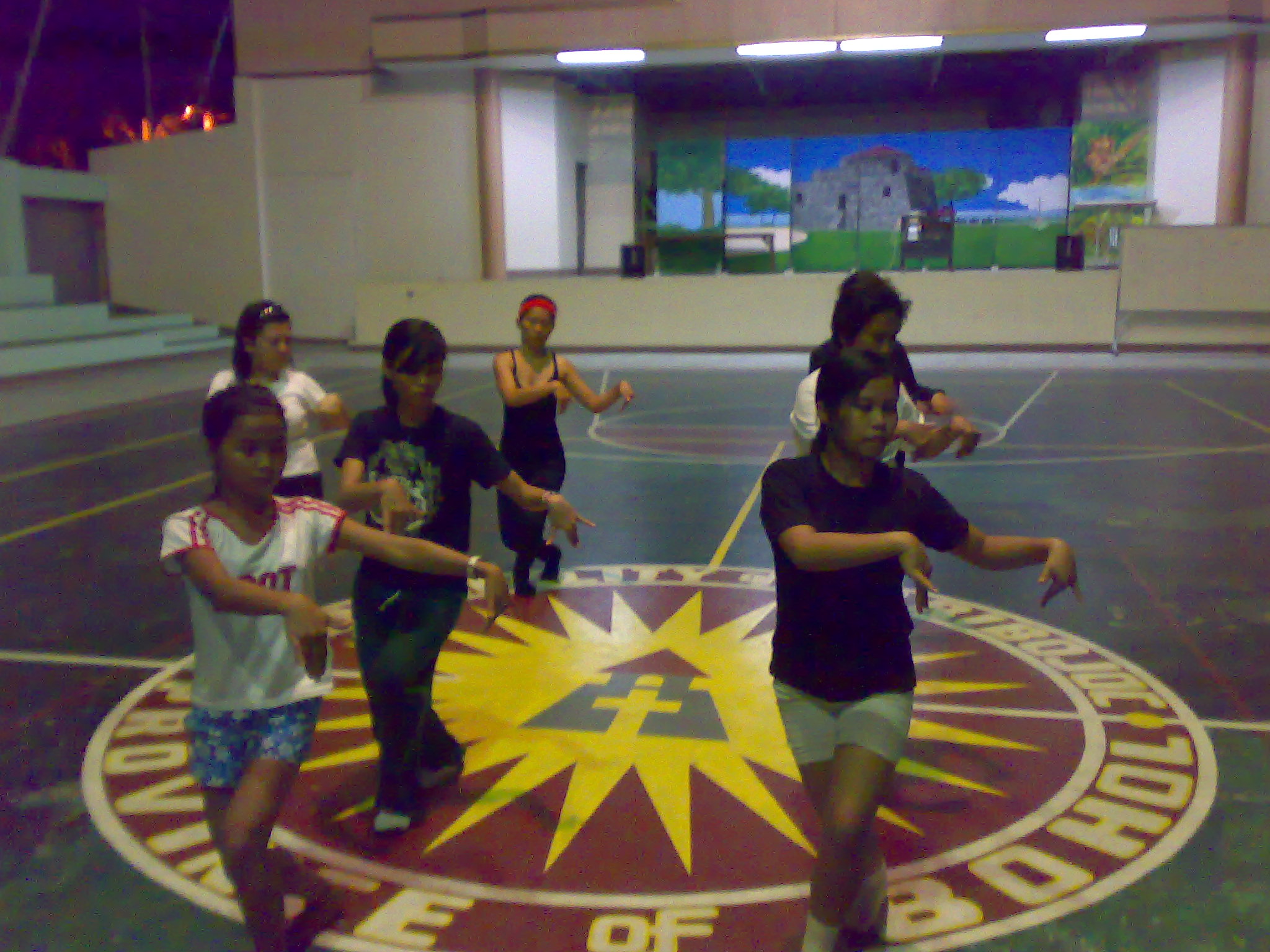
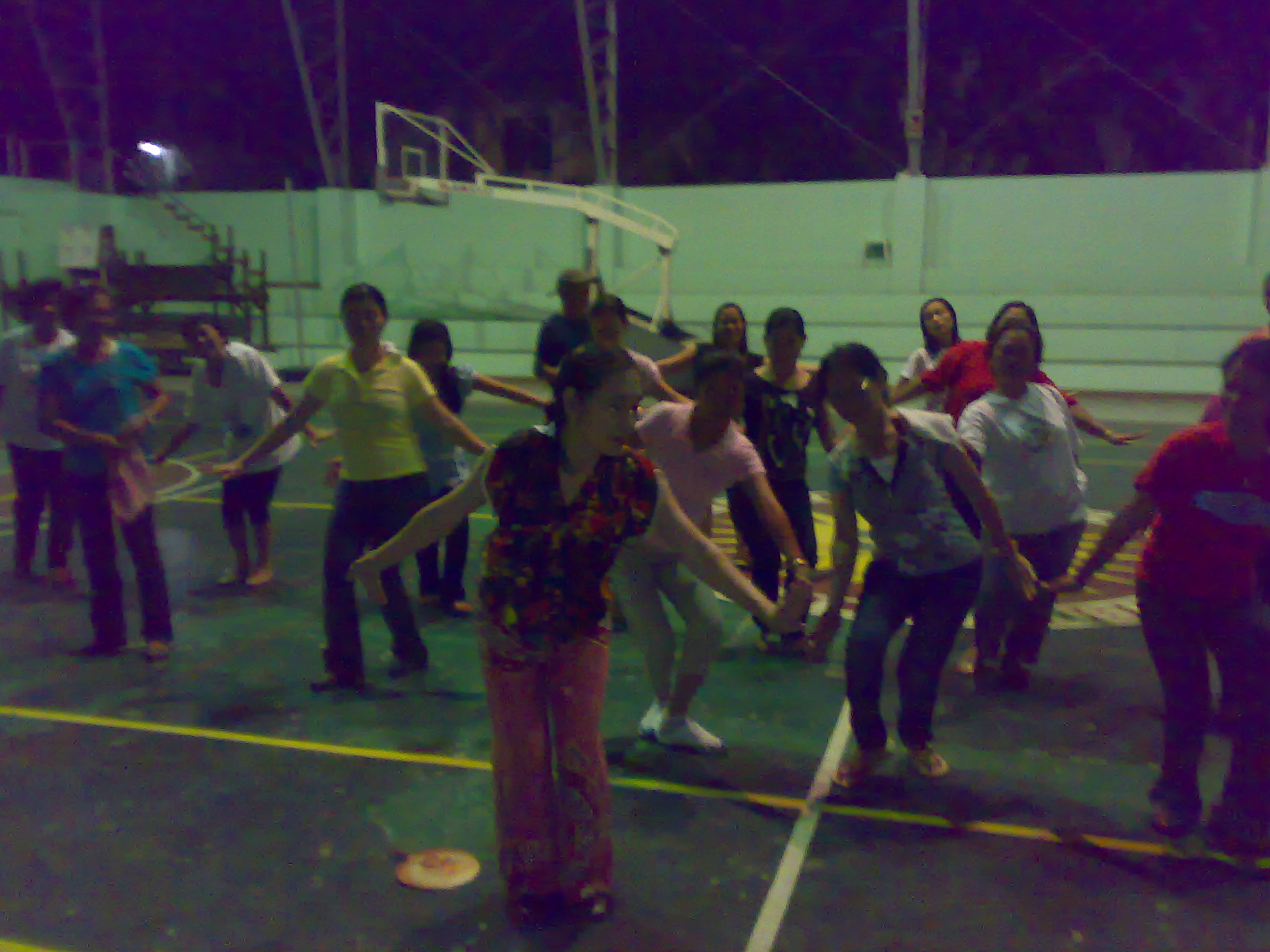
Another important lesson was on breathing. The participants had to undo their previous training on dance that utilized linear counting. The AIM emphasizes the use of the inhale-exhale to guide the dancer in the movement. Counting steps and movements is strictly prohibited. The inhale-exhale of the breath is also the guide for ensemble dancing.
The greatest challenge for the teacher and the student is the figure 8 that should be executed in a very slow manner, undulating like the waves of the sea. In any given class, there are slow and fast learners. Combining slow and fast learners in workshop groups when doing the routine movements helped in speeding up the learning process for everyone. We combined fast learners with slow learners to facilitate learning. Repetition is important in gaining familiarity and mastery of pangalay postures and gestures. Thus, several hours each day were devoted to the review of the basic pangalay walk, glide, connectives and the figure 8. Majority were able to do the figure 8 routine but they still need regular practice to gain mastery of the movement.
After the basic lessons on pangalay, we volunteered to stay for another 5 days, knowing that 5 days of training in pangalay is not enough for the dancers to be able to apply pangalay postures and gestures to a new choreography about the Punta Cruz Watchtower. We helped in the choreography of the dramatic scenarios by applying the postures, gestures, stances, hand and arm movements in the dance drama. The play’s dramatic plot tackles the historic struggle of the Punta Cruz inhabitants in a bygone era against the marauders of the past, and the subsequent construction of the Punta Cruz Watchtower to help the local inhabitants of the past in fighting marauding slave traders.
The result was simply amazing. The Punta Cruz Cultural collective enthralled the audience with their pangalay movements in the 40-minute showcase which was the finale of the program on Monday evening, 21st of October 2008.
The well-received performance was the greatest proof that the syllabus we prepared based on the Amilbangsa Instruction Method was a success.
With the intensive course on pangalay, the cultural collective under the guidance of their director, Lutgardo Labad, will use whatever they have absorbed in the dance lessons to create an expanded and polished version of the showcase in a gala performance on the occasion of the launch of the Punta Cruz Watchtower cultural tour and performance. That’s in December 2008. We know it will be a great success, given the dedication of the dancers, mentors, sponsors, and their artistic director.
Prepared by:
Nannette Matilac and Ligaya Fenando-Amilbangsa
Sayaw sa Alon
You are cordially invited to the Moonrise Film Festival exhibitions of
Sayaw sa Alon
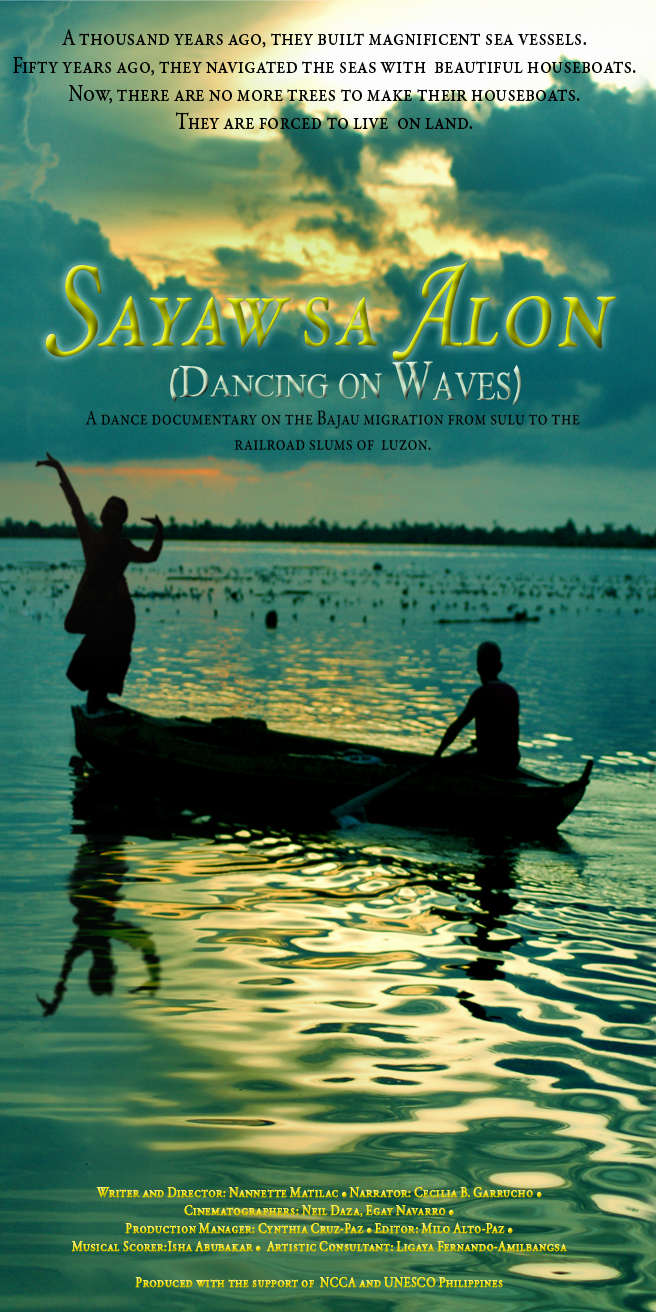
The Bajau possess the ancient wisdom of the sea. Can they preserve the invaluable heritage in the face of war, western acculturation, globalization and environmental degradation?
The documentary combines the traditional dances and music of the Sulu Archipelago to dramatize the rapid transformation of the Bajau from a seafaring people to a land-based nomadic group.
Shot in Tawitawi, Sitangkai, Zamboanga, Metro Manila and Laguna, the documentary follows the Bajau flight from Sulu Archipelago
to the railroad slums of Laguna.
Writer and Director: Nannette Matilac
Narrator: Cecilia B. Garrucho
Cinematographers: Neil Daza and Egay Navarro
Production Manager: Cynthia Cruz-Paz
Editor: Milo Alto-Paz
Musical Scoring: Isha Abubakar
Artistic Consultant: Ligaya Fernando-Amilbangsa
Produced with the support of the NCCA and UNESCO Philippines
Moonrise Film Festival, Robinsons Galleria Cinema
21 Aug 2008– 6:40 PM (Thurs)
22 Aug 2008– 9:05 PM (Fri)
23 Aug 2008– 11:00 AM (Sat)
24 Aug 2008– 1:40 PM (Sun)
25 Aug 2008– 4:25 PM (Mon)
26 Aug 2008– 6:40 PM (Tues)
Screenings at the Robinsons Place, Ermita will be announced.
For more information contact:
Moonrise Filmfest Secretariat
0915-323-5022, 0928-562-8858
557-9404, 557-9439
